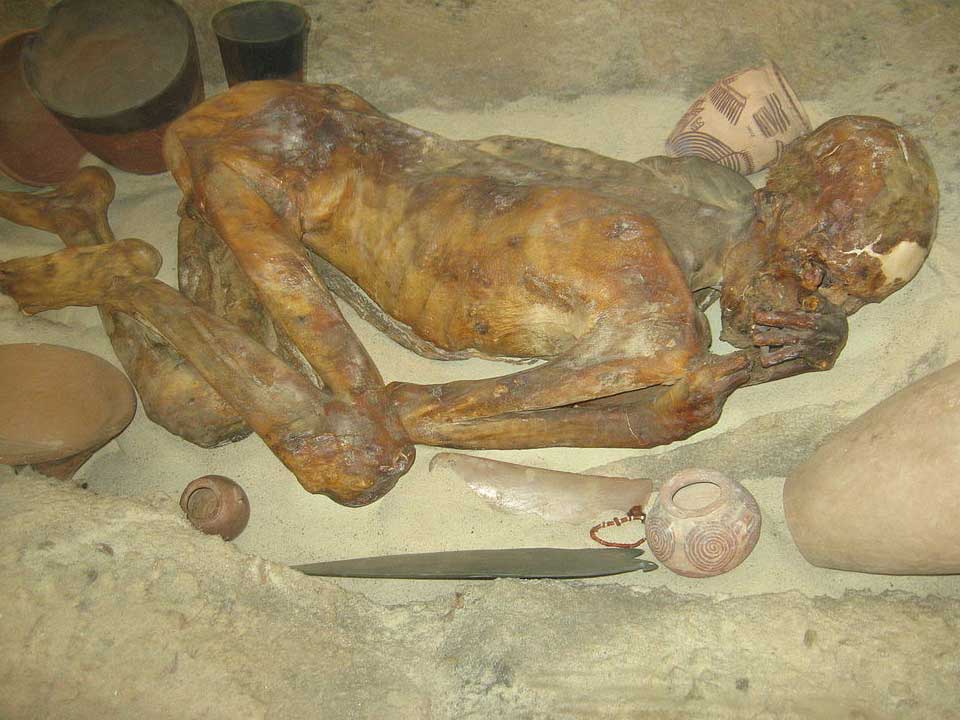Pre-Dynastic Muffication

The earliest Egyptian mummies were not preserved intentionally. Buried in sand pits with their knees to their chests and their hands to their faces, they would be surrounded by pottery and other grave goods, objects of ritual significance that will be buried with the dead, and would face either the setting or rising sun. Over time, sand and other environmental factors would mummify them naturally.
By the end of the Pre-dynastic period, Egyptians began to experiment with methods of preserving mummies intentionally. Evidence suggests that early fishers recognized that their catch would be preserved best if the fish was salted and dried, and if the internal organs were removed, so the practice began to be applied to humans. Wealthy Egyptians began to have their organs removed upon death as early as c. 4000 BCE, though the practice didn’t catch on with lower class citizens for many years.
Examples of Egypt’s natural mummies include the Gebelein pre-dynastic mummies, now kept in the British Museum.

At-A-Glance
- Inspired by the natural mummification caused by being buried in sand.
- Bodies would be buried in the fetal position, on their sides, surrounded by grave goods.
- Experimentation with the removal of internal organs.


